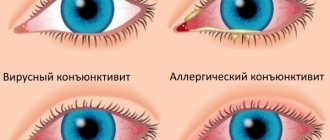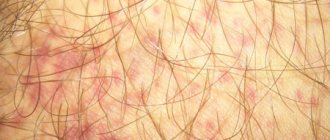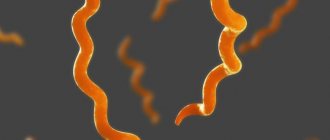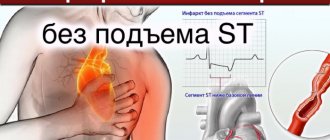Urinary disorders
The urethra, urethra, passes through the prostate. One of the functions of which is to control the stream of urine, opening and closing the outlet from the bladder. Therefore, when the prostate becomes irritated or inflamed, problems with urination often begin.
Increased or decreased urge
Symptomatic of prostatitis is precisely the increased frequency of urges with a decrease in the amount of urine in a portion. Just an increase in the frequency of urges with the same portion, volume - can be either the norm (I just started drinking more liquid) or a sign of a disease such as diabetes - diabetes mellitus or non-sugar diabetes. That is, the total amount of urine per day increases sharply, and therefore a person runs to the toilet more often. Normally, this happens, for example, when eating watermelons. Portions of urine are large or huge.
But when the same amount of urine comes out in a day, but it is distributed over 10-30 trips to the toilet - the size of each portion, of course, becomes several times smaller. In women, this is observed with cystitis, in men - with prostatitis or urethritis, with any irritation of the urinary tract, including inflammation.
This symptom can be quite constant, or it can fluctuate. If the irritant temporarily weakens the effect, for example when inflammation subsides.
In the case of chronic prostatitis, this does not indicate recovery, but an improvement in the condition. This is important in a diagnostic sense
Weakening of the urine stream
A weak urine stream is an important symptom specific to a prostate problem. Usually it is given by two main diseases. Adenoma (hyperplasia) of the prostate gland and prostatitis.
It's easy to distinguish them. Adenoma, as a rule, appears in the elderly, and prostatitis - more often in young active men. In any case, this is a symptom that requires examination of the prostate, and not other organs.
Exceptions are rare (stones, urethral stricture).
The dependence of the strength of the urine stream on the effect on the gland is specific. From ejaculation, sexual intercourse or lack thereof. From walking or prolonged sitting. From violating the diet or following it.
Unpleasant sensations
Very characteristic is not just an increased frequency of urges, but also unpleasant sensations during urination.
When eating watermelon, for example, you can run to the toilet every 10-15 minutes, but the sensation is rather pleasant and satisfying. But prostatitis will give you a very unpleasant, “imperative” urge to go to the toilet. This brings relief - but for a fairly short time.
At night, the urge appears more often and is often more unpleasant. This can interfere with sleep and is often one of the main complaints.
Urine Portion Sizes
The size of urine portions decreases. This is due to both the irritating effect of prostate inflammation and the increased sensitivity of the urinary tract in case of inflammation. Hypersensitivity - gives the feeling that a lot of urine has already accumulated in the bladder, “half a bucket” - but in fact there is literally 30-100 ml.
Serving sizes may vary. With more fluid, urinary tract irritation decreases as the urine becomes more dilute. It turns out to be a paradox - a person drinks more fluid, but goes to the toilet less often, due to increasing portions.
Sharp and urgent urges
Imperative (sharp) urges - more common during exacerbation, or with age. They can force a man to refuse trips, or they can make their own way “from toilet to toilet.” In advanced cases, this leads a man to the need to wear a diaper.
On the one hand, urine comes out weaker, and on the other hand, when you have the urge, you have to go to the toilet. At any cost.
It is almost impossible to “endure” such an urge
Urine dripping
Some urine always remains after urination. “No matter how much you shake your penis, the last one will be in your panties” - popular wisdom.
However, a little is 1-2-3 drops of urine, no more. Any visible excess of this norm is quite typical for a problem with the urinary tract in a man, but is not always characteristic of prostatitis.
This also includes a completely different symptom - discharge from the urethra. Sometimes they are difficult to distinguish and additional analysis is required.
More often, the discharge does not depend on urination, is thicker than urine, can be light, colored, transparent and cloudy... They require mandatory analysis to identify the cause. It can be a sign of both prostatitis and urethritis, or a venereal disease.
Pharmacological treatment
First of all, antibiotics are prescribed . The course is long - 1-1.5 months. Before prescribing antibacterial agents, the type of pathogen and its sensitivity to the drugs are determined.
Be sure to use immunocorrective drugs , because reduced immunity is a common cause of inflammation. Help from an immunologist is possible.
Therapy for chronic inflammation of the prostate is not complete without anti-inflammatory drugs . To begin with, non-steroidal drugs are prescribed: Diclofenac, Ibuprofen, Meloxicam. They are used in the form of tablets or injections. If they fail to achieve the desired result, hormones are used: Prednisolone, Dexamethasone.
Alpha blockers will help relieve muscle tension from the bladder and perineum. They act symptomatically, reducing pain and improving urination.
If unbearable pain occurs, painkillers are relevant .
Separately, it is worth mentioning the use of such dosage forms as suppositories . They are perfect for treating chronic prostatic processes. Most often, its symptoms are mild, and the mild action of suppositories is quite enough to relieve them.
They are inserted into the rectum. Its close location to the prostate gland allows you to quickly and effectively achieve results. In addition, the harmful effects of tablets on the gastrointestinal tract and difficulties with injections are eliminated. Suppositories have an anti-inflammatory and analgesic effect on the organ.
Pain
Just like a sore throat with a sore throat, prostatitis also causes pain in the lower abdomen, perineum, groin, lower back or sacrum.
Where and how exactly does it hurt?
The pain can also “radiate” to the scrotum, legs, sometimes to the abdomen, up to the level of the navel and even higher. What is important for us is the nature of these pains, their connection with other symptoms and with external causes.
When and why do they appear
A connection with lifestyle, sedentary work, ejaculation or abstinence allows you to either practically exclude prostatitis, or suspect it with a high probability.
Thus, constant pain that does not depend on these causes can more often be a manifestation of a “neurological” cause, such as CPPS, chronic pelvic pain syndrome, for example. But the pain that appears after ejaculation for several hours or days. or, on the contrary, it disappears after ejaculation for hours and days - it is very likely associated with prostatitis.
Duration
Any. The duration may depend on the severity of the exacerbation and other concomitant diseases. For example, depression will give constant excruciating pain even with minor prostatitis. A painless form of prostatitis can mask the disease, possibly for many years.
That is, one cannot judge the disease and its severity by this symptom alone.
What makes it better or worse?
This is the main thing that worries the doctor.
The location, nature or duration of pain can be very different for the same disease. But the dependence of the condition on ejaculation, on sedentary work or walking, on overexcitation, on cooling or spicy food - quite accurately helps us determine both the diagnosis itself and the direction of treatment and preventive measures that will make it possible to practically recover from chronic prostatitis.
Pain in the heart, back and other organs
The prostate is a small organ in the pelvis. But its inflammation can affect the entire body.
The first way of influence is intoxication. As with any serious inflammation, such as the flu, the whole body or most of it can hurt. In the same way, the body can hurt with prostatitis, with its exacerbation.
The second mechanism of pain in distant areas (head, heart, hypochondrium, legs) is neurological. Along the course of the nerves and spine, pain can “radiate” to fairly distant areas of the body, and even form “secondary” foci of inflammation. For example, in the lumbosacral region. And from there, the pain can “radiate”, radiating to the thoracic and cervical spine, to the legs, and almost anywhere.
Possible complications
The lack of timely therapy leads to the progression of pathological processes, against which serious consequences arise:
| Name | Description |
| Vesiculitis | The inflammatory process affects the epididymis, seminal vesicles, and testicles. |
| Nervous system dysfunction | Discomfort in the genitourinary organs provokes a decrease in immunity. Metabolic processes in a man’s body also worsen. |
| Prostate sclerosis | The structure of the organ and the size of the prostate gland change. There is regular retention of urine in the bladder and urination is impaired. |
| Prostate cancer | An increase in free radicals in chronic prostatitis provokes the occurrence of malignant processes. |
| Prostate scarring | The inflammatory process negatively affects the structure of the prostate gland. Constant progression of the disease leads to scar formation and disruption of organ function. |
| Infertility | Chronic inflammation of the prostate negatively affects sperm, worsening its quality and quantity, and also slowing down the movement of sperm. Their tail and head are destroyed. |
Chronic prostatitis provokes psychological problems in men. Libido decreases, erection is impaired, and problems with self-esteem appear. Constant stress provokes depression, nervous breakdowns, and increased irritability.
Treatment of chronic prostatitis takes a long time, and it does not always help to completely get rid of the disease. It is important to consult a doctor promptly and treat inflammation of the prostate gland immediately. We should also not forget about the prevention of prostatitis in order to prevent serious complications.
Article design: Vladimir the Great
Erection problems
“Officially” an erection should not be affected by inflammation of the prostate. She has other development mechanisms that are not directly related to this “second heart” of a man.
However, in practice, erection is impaired. At a minimum - during exacerbation. There may be several mechanisms - from the direct effect of inflammation of a nearby organ on the “switching on” of the penis - to an indirect, regulatory mechanism, similar to the weakening, slowdown of erection during long-term abstinence in adult men (not in adolescents, of course).
Fortunately, this erectile dysfunction is very well and reliably treated. Unless a psychological factor is added. A man with mild prostatitis experiences a slight decrease in erectile function. He begins to worry, listen to the penis - and neurosis destroys his erection completely at the root. This is the third, most serious mechanism of the influence of prostatitis on erection.
Ejaculation disorders
Ejaculation (ejaculation) is the release of sperm or ejaculate from the penis at the end of sexual intercourse. Performed by the muscles of the pelvic floor and prostate gland. More often, the symptom is a weakening of this release, a decrease in the “shot range” and a shortening of sexual intercourse.
Sometimes, or temporarily, there may be a prolongation of sexual intercourse, the man cannot “cum” in any way.
Sperm ejection force
When a muscle weakens, its work and its action weaken. The composition of ejaculate and sperm changes, and the force of ejection also changes.
This is important for three reasons.
The first is one of the most accurate signs of damage to the prostate. Almost all other manifestations and symptoms can occur in other diseases. But the weakening of the discharge is pathognomonic, specific specifically for prostatitis.
The second reason. Decreased output is the factor that worsens the condition of the prostate after sex, which provokes POIS (post orgasm malaise syndrome).
During treatment - men with POIS report worsening of their condition following weak, ineffective sperm output. And vice versa - they are increasingly saying that high-quality ejaculation did not give symptoms of POIS. Not 100%, but very likely.
Third, this is probably the main factor that prevents a man with prostatitis from being cured without medical procedures. As soon as the force of sperm emission is normalized, the main mechanism for maintaining male health is activated - the “self-cleaning” of the prostate gland.
Blurred sensations
Instead of a vivid orgasm, the man feels something like “peeed in boiling water” or “felt almost nothing.”
The strength of sensations can fluctuate, and also serves as a fairly accurate sign of problems in the prostate, or a sign that improvement is beginning.
Color, quantity and consistency of ejaculate
One of the important objective parameters related to the prostate and prostatitis. Often, sperm analysis is performed only to determine fertility and chances of conception. However, semen analysis provides a lot of information about the condition of the prostate.
So, the color of sperm and ejaculate is normally milky white, cloudy. The consistency is medium-thick, there must be “stickiness”, stretchability of a drop of sperm in the form of a thread. The smell is specific, without any admixture of the smell of rot, pus, and so on.
Any change in these parameters requires urgent examination if there is no diagnosis yet, and treatment - for example, when a diagnosis of prostatitis is already available.
Color (bright white, yellowish, and greenish) indicates the presence of an impurity in the sperm, often of an inflammatory, purulent nature.
Transparency indicates decreased prostate function. And there will almost certainly be few “lecithin grains” in the microscopic analysis, which indicates a decrease in the function of this particular organ, although not necessarily from inflammation.
The quantity can be different, it can also fluctuate normally, depending on the rhythm of sexual life. A stable decrease or increase in the amount of sperm causes alarm. Perhaps this is a manifestation of “blockage” of part of the prostate tubules, or simply a decrease in ejaculate production.
Not 100%, but quite a characteristic symptom for chronic prostatitis.
Hemospermia
Let us separately consider hemospermia - an admixture of blood in sperm. It can be noticeable simply with the eye, more often with damage to blood vessels, with calliculitis, with cancer, and finally with trauma.
The blood can be either bright scarlet or old, dark, venous. In any case, this requires urgent analysis of the ejaculate and other examinations.
There is also an admixture of a small amount of blood in the ejaculate - microhemospermia. Often occurs during exacerbation of prostatitis, along with an increase in the number of leukocytes. Sometimes this option can be perfectly treated by fortifying the body; many urologists, just in case, give a complex vitamin preparation in a good course, often together with zinc, selenium, and so on.
This is analogous to bleeding gums. Loose, inflamed gums bleed very often. And after the elimination of inflammation and strengthening of the gums, the admixture of blood, of course, disappears.
There is no need to be afraid of this symptom if the reason for the appearance of blood in the semen is known.
Causes
The reasons due to which the disease can develop are now divided into two groups - congestive or non-infectious prostatitis and an illness that occurs due to infection. The first type may occur due to the following factors:
Frequent exposure to stressful situations
- decreased immunity;
- frequent hypothermia of the body;
- constantly wearing tight clothes or uncomfortable underwear;
- hormonal disorders;
- long-term abstinence from sexual intercourse;
- constant interruptions of sexual intercourse as a contraceptive measure;
- excessive activity on the “gender front”;
- light physical activity;
- lack of mobility;
- bad habits - alcohol, smoking, drugs;
- frequent exposure to stressful situations;
- injuries sustained by the pelvic organs.
Infectious chronic prostatitis occurs due to the fact that all kinds of pathogens, such as bacteria and microbes, as well as viruses and fungi, penetrate into the prostate tissue. The development of the disease is possible due to the presence of foci of infection in the body. The disease can manifest itself due to sinusitis, chronic tonsillitis or pathological changes in the kidneys. Also, surgical interventions in the pelvic organs can contribute to the development of the disease. It should be borne in mind that the signs of chronic prostatitis are quite diverse.
Decreased libido
A very important symptom. Officially, it should also not appear with prostatitis. In practice, there are usually two mechanisms involved.
The first is intoxication. With any inflammation, from flu to sore throat, libido and desire for sex may decrease. The body sets its sights on other tasks.
Second, perhaps libido is affected by something similar to the phenomena of Tarkhanov and Belov. The symptom is nonspecific, it can also occur, for example, with a depressive background, which can appear with any chronic illness and even without it. But in combination with other manifestations, we take this decrease into account as important and significant. Including to influence the prospects for recovery.
If this problem is not solved and the man is left with reduced libido, it is difficult to talk about curing prostatitis. A decrease will lead to irregular sex life, stagnation in the pelvis and an increased risk of exacerbations.
Prevention
Simple rules for the prevention of chronic prostatitis:
- The chronic stage is always a consequence of late diagnosed, incorrectly treated or untreated acute prostatitis. Therefore, you need to undergo regular medical examinations with a urologist.
- Protect the pelvic area from hypothermia and injury.
- Get rid of nicotine and alcohol addiction.
- To live an active lifestyle.
- Avoid stressful situations.
Any man between the ages of 20 and 50 can develop chronic prostatitis. It is necessary to follow simple preventive measures to reduce the risk of developing pathology.
Other indirect signs
Weakness, lethargy, sweating
More often than not, these are simply manifestations of intoxication. Just like with chronic sore throat, bronchitis and so on. Usually such symptoms do not bother you, but even with a slight exacerbation, there is a deterioration in the general condition; there is a fairly clear proportionality between the strength of inflammation and the degree of sweating, weakness, and apathy.
As the condition improves, such symptoms go away. The problem is not at all specific to prostatitis. But it helps to assess the strength of the exacerbation, for example.
Headaches and dizziness
Dizziness and migraines can appear either immediately after the act or after a day or two. They are “vegetative” reactions that usually accompany exacerbation of prostatitis, more often in people with a tendency to vascular reactions.
A nonspecific symptom, of course. Maybe for dozens, if not hundreds of other diseases. But we will certainly take it into account. And of course, we can remove it during the course of treatment.
Have I been diagnosed accurately?
I highlighted the symptoms specific to prostatitis above. It's better to evaluate the whole picture. That is why I always ask men who turn to me for help as much information as possible.
The presence of already 2-4 symptoms associated with the prostate almost guarantees that you really don’t have to look further. Ideally, these symptoms should be assessed by a medical specialist: urologist, sexologist, andrologist.
However, every man faced with a similar disease can suspect a problem. Including - not only at yourself, but also at your relative, friend, acquaintance. The earlier the disease is detected, the more effective and faster its treatment will be.
This also applies to chronic prostatitis. The difference between several months of illness and several years is enormous in terms of prospects, cost and results of treatment.
How is the disease detected: diagnosis
Chronic prostatitis is diagnosed using the same methods as acute .
First of all , the doctor interviews and examines the patient . The examination is carried out using a digital rectal examination of the prostate. It may be enlarged, painful, asymmetrical and hardened. In rare cases (non-inflammatory CPPS) it is not changed.
Next, the doctor will prescribe tests . Laboratory methods include a general blood and urine test and analysis of prostate secretions. They will show an increased white blood cell count. Bacteriological examination of urine and prostate juice reveals the pathogen. Sometimes these indicators may be normal, but the process is still present.
To confirm the fact of the disease, the blood is tested for PSA. Instrumental methods will also help: ultrasound, TRUS, urofluometry.
Very often it turns out that a man does not suspect that he has such a disease, ignoring the symptoms. It is detected by chance, during systematic examinations. Therefore, it is recommended not to disturb the system and not to neglect scheduled inspections.











